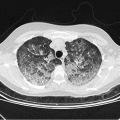Microorganism
Management
Coagulase-negative staphylococci
Catheter can be removed or retained
If removed, systemic antibiotics should be administered for 5–7 days
If catheter is retained, treat with a systemic antibiotic and antibiotic lock therapy for 10–14 days. If there is clinical deterioration, persisting or relapsing bacteremia then the catheter should be removed
Staphylococcus aureus
Catheter should be removed and systemic antibiotics administered for 14 days
Enterococcus spp.
For short-term catheters, catheter should be removed and patient treated with systemic antibiotics for 7–14 days. For long-term CVC or port-related bacteremia, catheter may be retained and systemic antibiotics with antibiotic lock therapy can be used for 10–14 days. If there is clinical deterioration and persisting or relapsing bacteremia, catheter should be removed
Gram-negative bacilli
Catheter should be removed and systemic antibiotics administered for 7–14 days
Candida spp.
Catheter should be removed and antifungal therapy administered for 14 days after the first negative blood culture
11.5 Prevention
Catheter-related infections can be prevented by implementing various measures at the time of catheter insertion and after its insertion. Table 11.2 below summarizes the strategies of CRBSI prevention.
Table 11.2
Preventive strategies of CRBSI
Educating health-care workers regarding the proper insertion and maintenance of catheters |
Aseptic technique (central line bundle) |
Hand hygiene using antiseptic soap and water or alcohol |
Maximal sterile barrier (cap, mask, gown, gloves) |
Cleaning skin with chlorhexidine solution before insertion |
Avoidance of femoral vein for central venous catheters in adults |
Removing unnecessary catheter |
Using antimicrobial antiseptic impregnated catheters |
Using antimicrobial lock solutiona |
11.5.1 Before Catheter Insertion
Proper hand hygiene should be performed using alcohol or antiseptic soap and water [20]. It is also recommended to use maximal sterile barrier precautions including the use of a cap, mask, sterile gown, sterile gloves, and a sterile full body drape for the insertion of CVCs or guidewire exchange [20, 28]. Femoral veins for central venous access in adults should be avoided, and the subclavian vein is preferred instead (subclavian vein should be avoided in patients undergoing hemodialysis as it associated with higher risk of stenosis), because femoral access is associated with greater risk of infection and deep venous thrombosis [20].
Cleaning the skin with an antiseptic (70 % alcohol, tincture of iodine, an Iodophor, or chlorhexidine gluconate) before peripheral venous catheter insertion is recommended. While for central venous catheter and peripheral arterial catheters, a chlorhexidine-based (>0.5 %) skin antiseptic should be used in patients older than 2 months, and the antiseptic should be allowed to dry according the manufacturer’s recommendation before insertion. For children younger than 2 months, povidone-iodine solution can be used [20, 28].
11.5.2 After Catheter Insertion
If there is a nonessential catheter, it should be removed. Peripheral catheters should be replaced every 72–96 h, whereas there is no need for replacing CVCs unless indicated. Administration sets should be replaced every 4–7 days (unless blood, blood products, or fat emulsions are given through it, then the administration set should be replaced within 24 h of initiating the infusion) [20].
Another approach of prevention is the usage of impregnated catheters with either minocycline-rifampin or chlorhexidine-silver sulfadiazine. Using these impregnated CVCs has shown to decrease the rate of CRBSI compared to non-impregnated catheters [3, 10]. These impregnated catheters are highly cost-effective and safe and do not appear to select for resistance [5]. These catheters are recommended in patients whose catheter is expected to remain >5 days and the CRBSI rate is not decreasing with the abovementioned methods [16].
Catheters coated with chlorhexidine-silver sulfadiazine have been extensively studied and demonstrated decrease in catheter colonization. The first generation of these catheters is coated on the external surface only. They decrease the risk of CRBSI, but less effectively than minocycline-rifampin catheters, by 12-fold as has been shown in a prospective randomized trial [6, 31]. The second-generation catheters were coated both internally and externally. They showed significant decrease in colonization when compared to first generation, but did not demonstrate statistically significant decrease in CRBSI when compared to non-coated catheters [10, 31, 32].
Catheters coated with minocycline-rifampin have been shown in several studies to reduce the risk of CRBSI [9]. Data suggest that the efficacy of minocycline-rifampin catheters may be prolonged beyond that of chlorhexidine-silver sulfadiazine catheters [6]. First-generation chlorhexidine-silver sulfadiazine catheters are efficient only when the average insertion time is less than 8 days [35]. Minocycline-rifampin catheters are efficient for a longer period of time (around 50 days) [6].
Minocycline-rifampin-coated catheters inhibit the biofilm adherence of resistant gram-positive and gram-negative pathogens with the exception of Pseudomonas aeruginosa and Candida spp. [29]. In order to expand the spectrum of antimicrobial activity, a second generation of minocycline-rifampin-impregnated catheters has been developed by adding chlorhexidine. These catheters showed better in vitro activity against methicillin-resistant S. aureus, P. aeruginosa, and Candida [29, 30].
We can achieve a near zero rate of CRBSI using aseptic techniques plus impregnated catheters. A study found that the rate of CRBSI was 1.28 per 1,000 catheter days when using uncoated catheters and aseptic techniques, while it was 0.25 per 1,000 catheter days when using both the aseptic techniques and minocycline-rifampin-impregnated catheters [9]. Another study found the rate of CRBSI using only the aseptic techniques as 1.24 per 1,000 catheter days, while in combination with impregnated catheters, the rate was 0.4 cases per 1,000 catheter days [32].
Another approach to prevent CRBSI is the use of antimicrobial lock solutions, by which an antimicrobial solution is used to fill a catheter lumen and then allowed to dwell for a period of time. Antibiotics used include vancomycin, gentamicin, ciprofloxacin, minocycline, amikacin, cefazolin, cefotaxime, and ceftazidime [20]. Antiseptics could be used such as alcohol and taurolidine. These agents are usually combined with anticoagulant such as heparin or EDTA. Using this technique is recommended in patients with long-term catheters who have a history of multiple CRBSI despite adherence to aseptic techniques [20, 28].
References
1.
2.
Capdevila JA, Planes AM, Palomar M, Gasser I, Almirante B, Pahissa A, Crespo E, Martínez-Vázquez JM. Value of differential quantitative blood cultures in the diagnosis of catheter-related sepsis. Eur J Clin Microbiol Infect Dis. 1992;5:403–7.CrossRef
Stay updated, free articles. Join our Telegram channel

Full access? Get Clinical Tree






